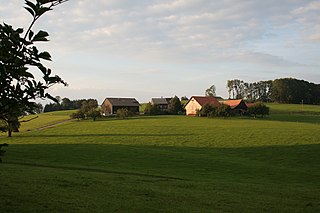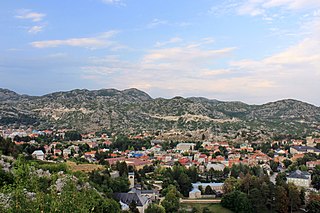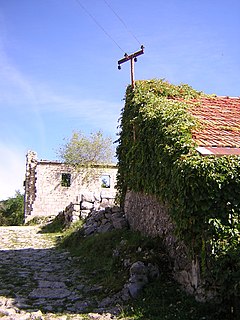
Township refers to various kinds of settlements in different countries.

A district is a type of administrative division that, in some countries, is managed by local government. Across the world, areas known as "districts" vary greatly in size, spanning regions or counties, several municipalities, subdivisions of municipalities, school district, or political district.

A hamlet is a small human settlement. In different jurisdictions and geographies, hamlets may be the size of a town, village or parish, be considered a smaller settlement or subdivision or satellite entity to a larger settlement. The word and concept of a hamlet have roots in the Anglo-Norman settlement of England, where the old French hamlet came to apply to small human settlements. In British geography, a hamlet is considered smaller than a village and distinctly without a church.
Barrio is a Spanish word meaning a quarter or neighbourhood. In Spain, several Latin American countries and the Philippines, the term is also used officially to denote a division of a municipality.
In England and Wales, Northern Ireland, and the Republic of Ireland, an urban district was a type of local government district that covered an urbanised area. Urban districts had an elected urban district council (UDC), which shared local government responsibilities with a county council.

Ukraine is divided into several levels of territorial entities. On the first level there are 27 regions: 24 oblasts, one autonomous republic, and two "cities with special status". Following the 2014 Crimean crisis, Crimea and Sevastopol became de facto administrated by the Russian Federation, which claims them as the Republic of Crimea and the federal city of Sevastopol. The international community recognises them as being Ukrainian territory.

The municipalities are the first level administrative subdivisions of Montenegro. The country is divided into 23 municipalities including the Old Royal Capital Cetinje and the Podgorica Capital City. Podgorica is divided into one subdivisions called city municipality, forming the basic level of local government.
Municipality of Podgorica is divided into 57 local communities, bodies in which the citizens participate in making decisions about matters of relevance to the community in which they live.

Kwekwe District is a district in Zimbabwe.

Rijeka Crnojevića bridge - also known as Danilo's Bridge - is a bridge in Rijeka Crnojevića, Montenegro. The bridge spans the Crnojević River and is one of the most important historical monuments and tourist attractions in Cetinje municipality. The bridge connected Rijeka Crnojevića with the medieval town of Obod, located on a hilltop across the river, which was the location of a first Southern Slavic printing house.

The 2013 Old Royal Capital Cetinje municipal elections was held in Montenegro on Saturday, November 16, 2013 to elect representatives in the City Parliament of the Old Royal Capital Cetinje. All 33 seats were up for elections. In the previous mandate, Cetinje was governed by Democratic Party of Socialists (DPS), with mayor Aleksandar Bogdanović.

Radio Cetinje is the public radio station in Cetinje, Montenegro. It is the oldest electronic broadcaster in Montenegro, founded on 27 November 1944. Radio Cetinje is part of RTV Cetinje and operates via FM and Internet.
Podgorica is the capital and largest city of Montenegro. According to 2011 census, the population of Podgorica city proper is 150,799, while Podgorica Capital City has a population of 185,937.













